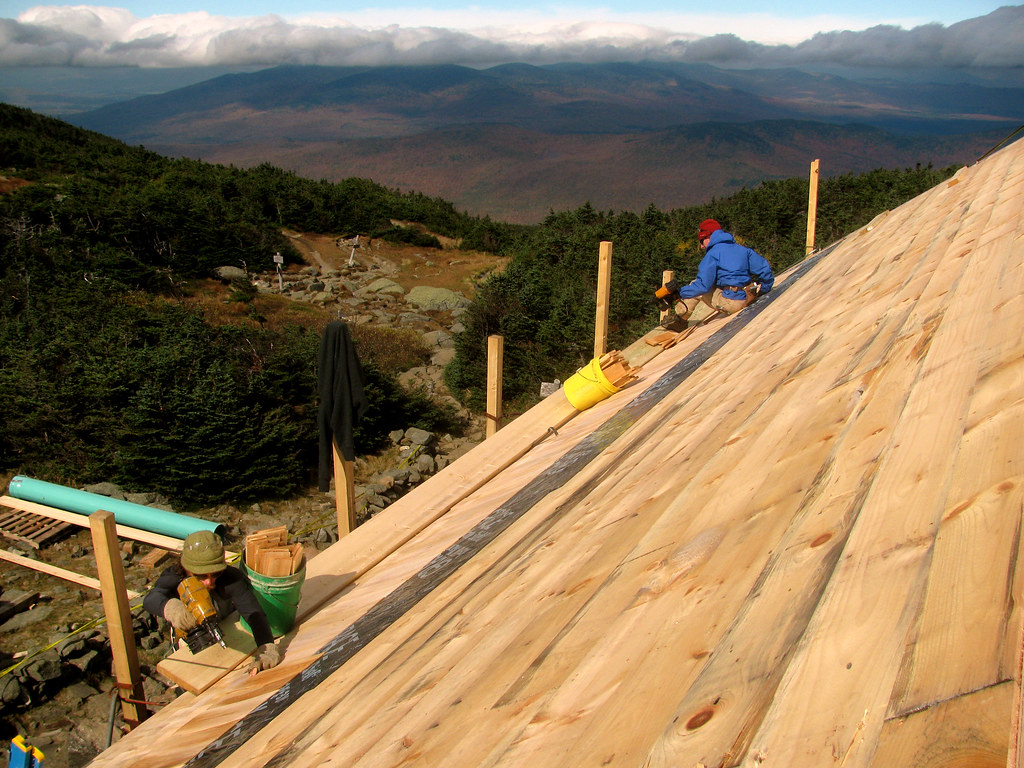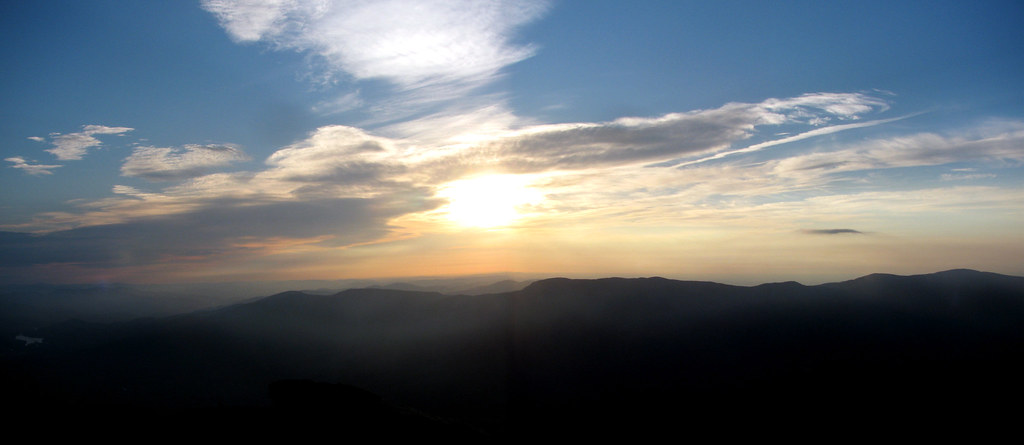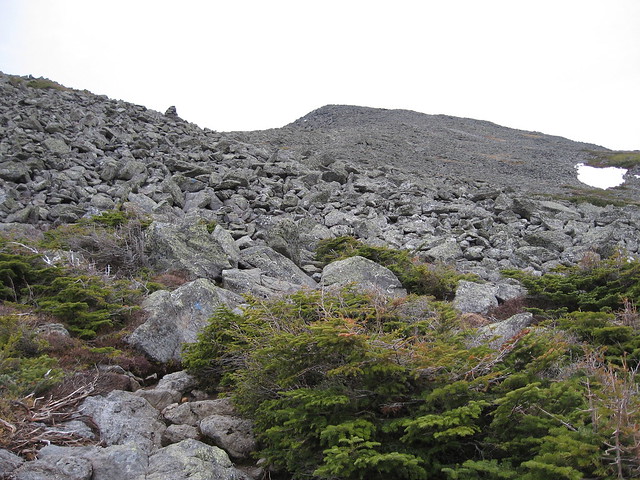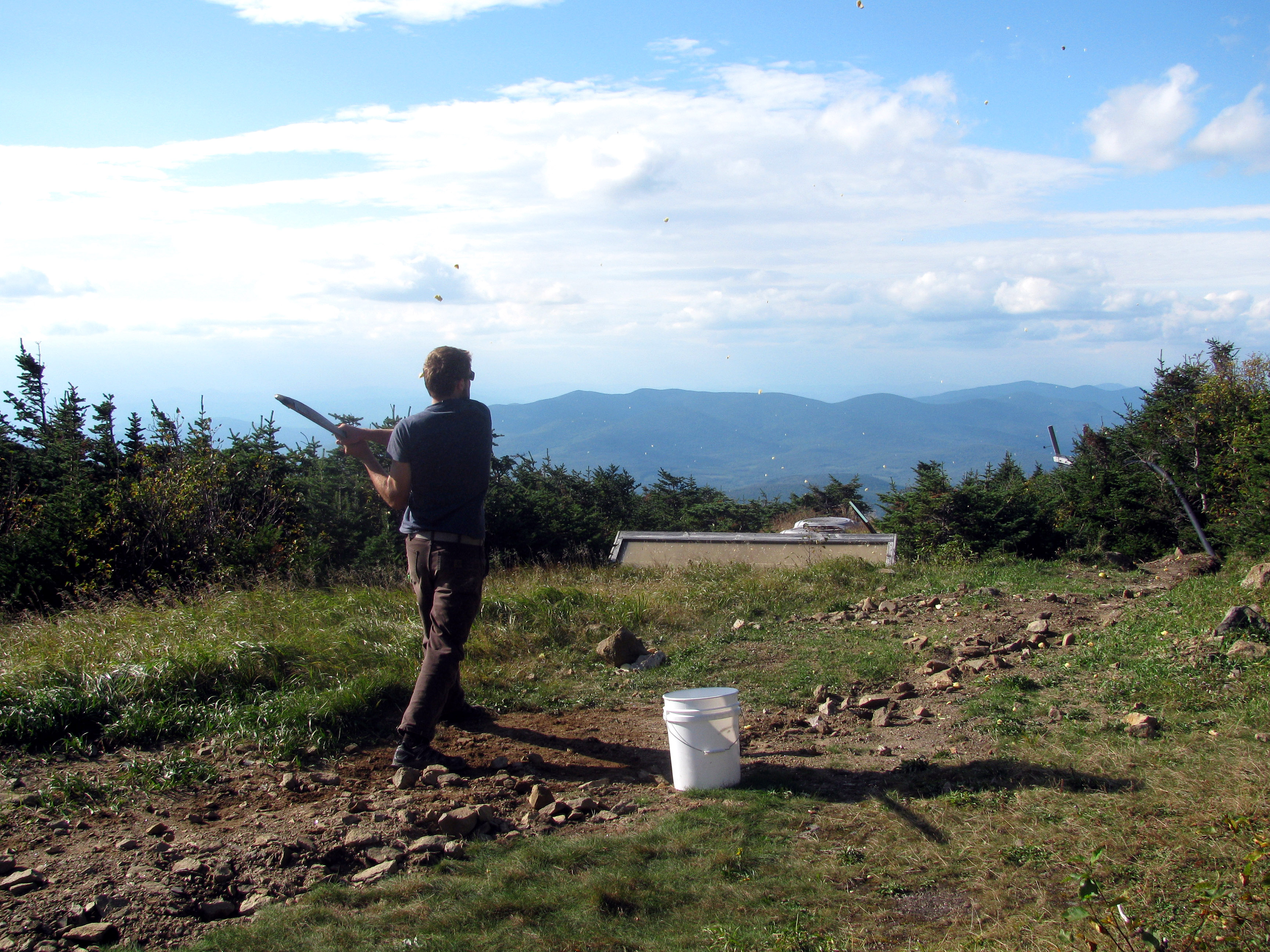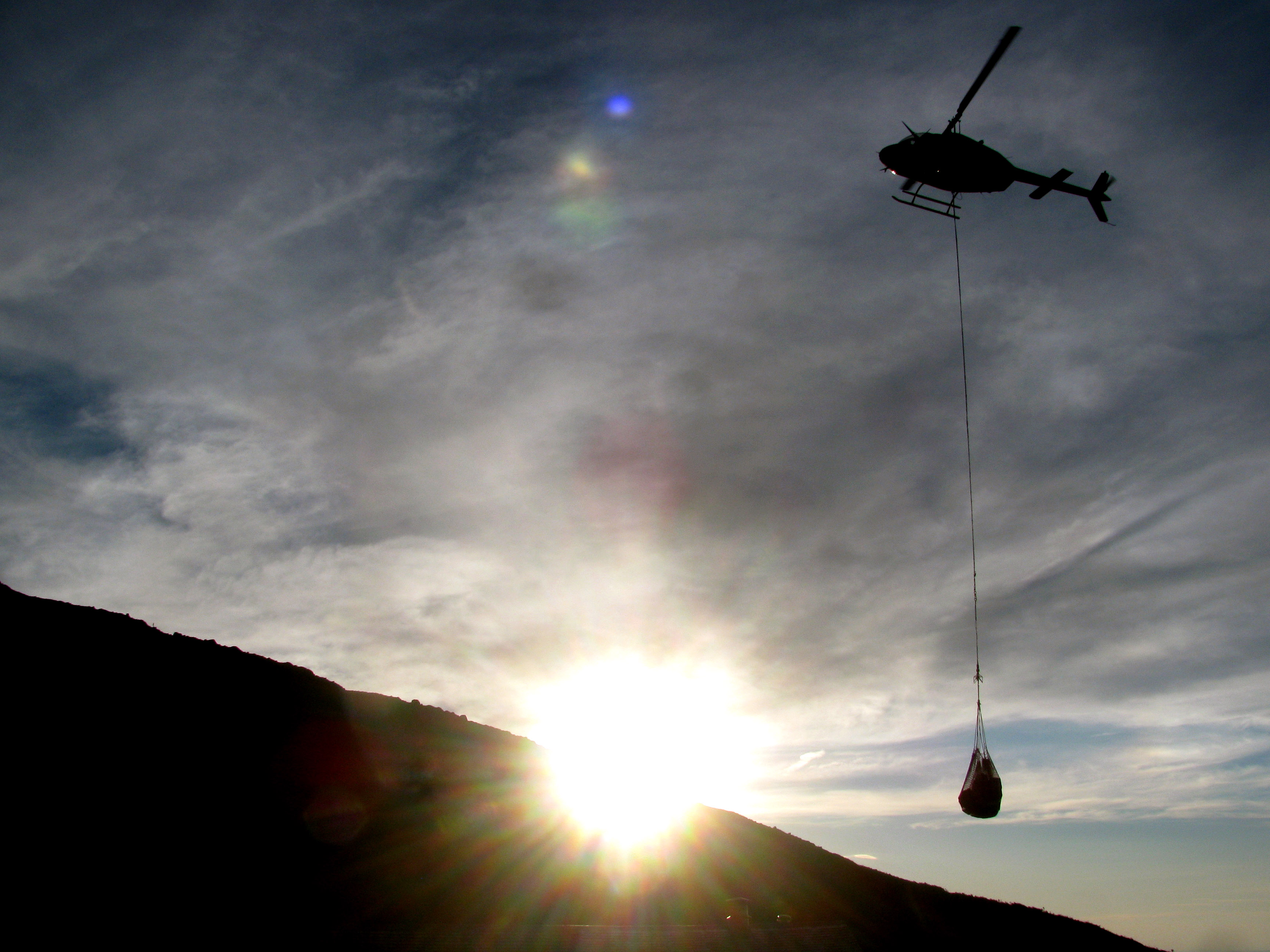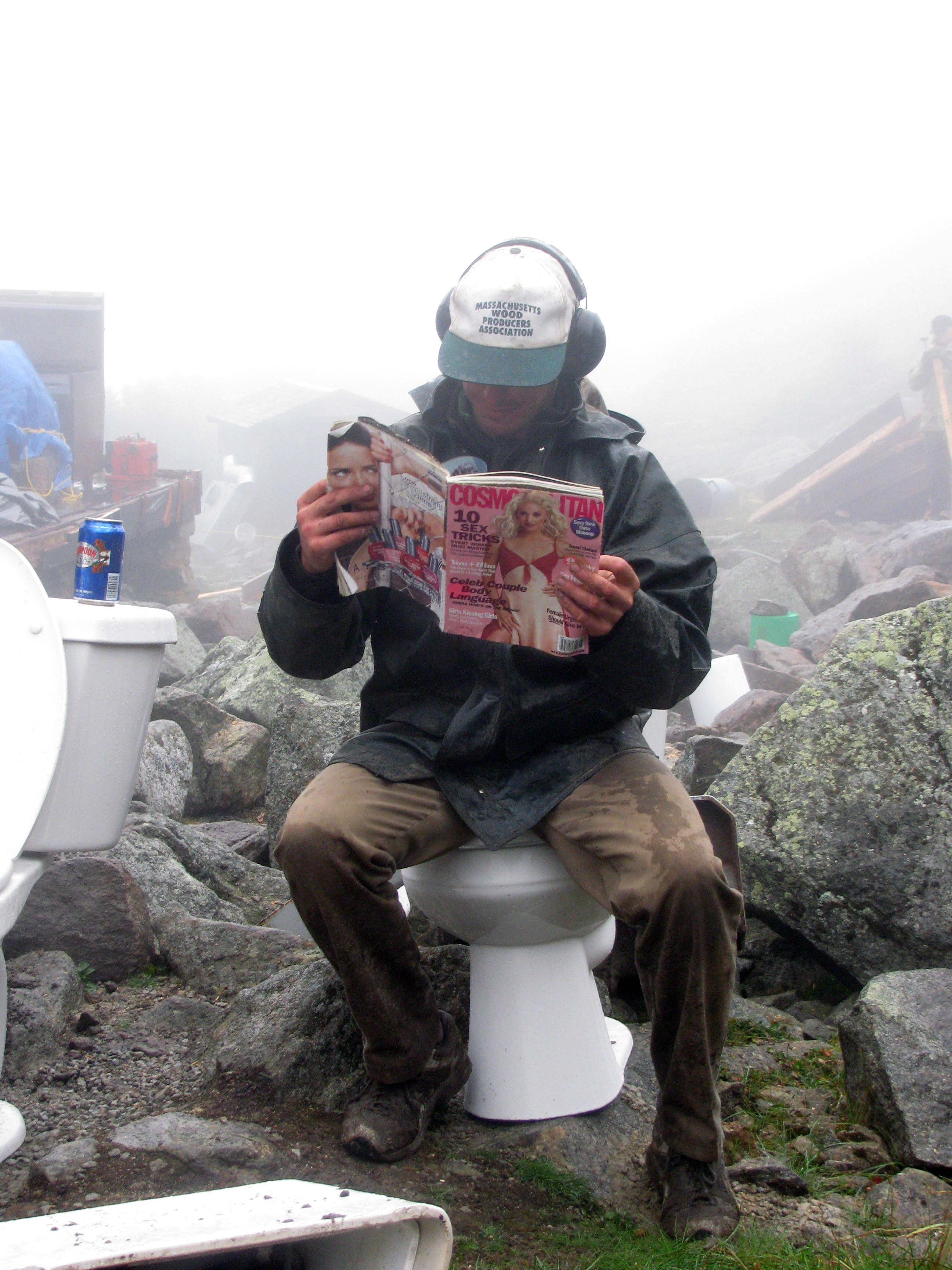For my last fall hike to the Hut , I decided on a scenic route. Instead of a casual 4-mile hike from the North, I decided to hike directly from Pinkham Notch, south of the Hut. A 7-mile stroll that builds in difficulty, finishing with a steep climb up the headwall of Madison Gulf, just Espresso and I.
We have two hiking modes together. One with him in front, leading the charge on four legs, and another with him on my heels. For the most part, he lets me choose which. If the terrain is easy and there's a chance we may run into some wildlife, I keep him on my heels. On steep, rugged terrain, I let him go on ahead. Even in his old age, he can out climb me any day—I wouldn't want to hold him back!
A bit before noon we headed up the Old Jackson Road, not a road at all, but part of the Appalachian Trail. It wasn't quintessential hiking weather; sporatic light rain, hissing as it hits the newly fallen leaves, fall light filtering through the bare branches and that distinct crispness to the air, combined to make it perfect enough for me. Espresso stayed at my heels. Every so often something would crash through the woods along side us. We'd stop. Look. I put my camera away for this hike. Stowed my cell phone (off) deep in my pack. Whatever it was, there'd be no pictures. I wanted to enjoy it all completely. Was it a moose? Bear? Deer? My imagination? Knowing you're not alone, the reminder that these woods aren't yours, makes you feel that much luckier to be a guest.
We crossed the Mt. Washington Auto road, it's highway-wide gash cut through the forest heading up hill. Fresh, jet-black black pavement. The road is closed for the winter, but parked at the crossing was the Observatories giant Bombardier snow tractor, with it's tank-like tracks and passenger compartment on the back. Wilderness? Edward Abby definitely had a point. Monkey Wrench Gang? Where's Hayduke when you need him.
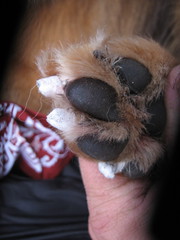 Espresso's Taped Toes |
Once we got into Madison Gulf I let Espresso pass and he took off like a puppy, bounding over boulders and up steep rock slabs before I even got within range to see how he was doing it. He'd be waiting for me at the top of technical sections with his "Let's Go, Let's Go!" grin.
He's nine now, nearing senior status in dog years. After a long hike I can tell he's sore, but on the trail, you'd never know. He still has the bounce in his step, and is always ready to go. If we stop to rest, or to enjoy the surroundings, he'll take the break. But if I sit too long, he'll start crawl into my lap with muddy paws, wagging his tail, eventually bouncing around and barking, wanting to keep heading up the trails. Typically a low-key dog, on the trail is the only time he'll show such a level of excitement.
 Espresso's leading the way on a previous hike up Madison Gulf. |
Heading up Madison Gulf, one of the more difficult trails in all the White Mountains, his age was merely a number. He charged ahead with more confidence and speed then he had showed two years before on the same trail. He'd climb, and wait, then bound up another steep stretch. On steep slabs or short, near-vertical sections, he'd follow cracks, gripping granite with his claws, even pulling himself upward with his front legs. A rock climbing dog.
We crested the headwall of the Gulf, and made our way through Madison Col, across patches of snow and ice to the hut. The weekend crew was on its way out. Soon, we had the place to ourselves. I lit a fire in the wood stove, put a wool blanket on the floor for my pup, and changed out of my hiking clothes.
Espresso laid down, and quickly fell asleep. His typical post-hike routine. I made some dinner, and settled in for the night in front of the wood stove. Home.
In all, Espresso spent four weeks at the hut with me and they were by far my most enjoyable. The first month I was there, he stayed with my parents. I knew he could handle hut life, but the job was new to me, and I felt it was best to not have the added variable. I loved hut life, but there was something—warm, furry, brown, four-legged and gives hugs on command—missing.
When my Mom hiked to the hut, Espresso came too. I said he'd hike down with her, but I knew he'd stay with me. I moved my sleeping area from the bunk room to the small attic loft above the kitchen. It was a dark, damp and dirty area that I couldn't even stand up in, but I put an extra bunk pad and wool blankets beside mine, and Espresso and I had our new home. He'd ride up the ladder on my shoulder every night for bed, or sometimes even climb the ladder himself. In the morning, I'd get on the ladder, and he'd put his paws on my shoulder and crawl up on it—fireman's carry down, ready to work for the day.
Whether sleeping in the hut, under the stars, camping in my tent, in the back of my truck, on someone's floor or couch, Espresso makes it homr. Once he was up at the hut with me, I didn't head back to Maine for three weeks. Why bother? We'd hike down from the hut and live the life of nomads. One weekend we ventured to a party in Plymouth. Espresso worked the room in his typical fashion, and even joined us in the sauna, sitting up on the bench and soaking up the heat. From -20 wind chills to a 150 degree sauna.
On one late night hike from the hut, Espresso proved his worth. Matt and I decided on a route that took us on the Parapet Trail, around the summit cone of Madison to the Eastern side, opposite from the hut. From there, we'd climb the Osgood Trail over the summit and back down to the hut. It wasn't an extreme adventure, but there was fresh snow, wind and darkness to contend with. Plus, the Parapet Trail is notoriously difficult. It doesn't have any significant changes in elevation, but cuts a bouldery traverse over scree and through krumholtz. It can be a tough trail to follow on a nice summer day, and under the conditions we were hiking in, it was going to be difficult to borderline impossible. With Espresso, it was a synch. We just followed his tracks and they led from cairn to cairn, marker to marker. He'd occasionally wait for us, and then forge ahead, leading us along the entire mile of the Parapet to the Osgood Junction. I'm not sure if it was by memory (we've hiked it twice before), by smell or pure instinct. Either way, he's a mountain dog like no other.
Espresso and I enjoying the weather outside the hut.




